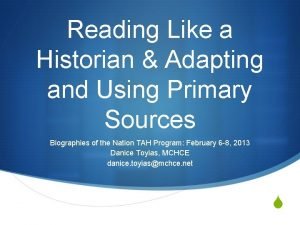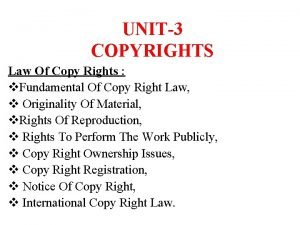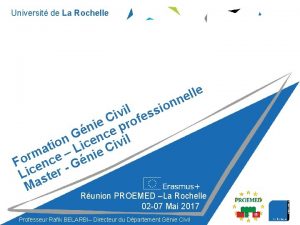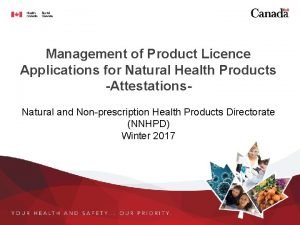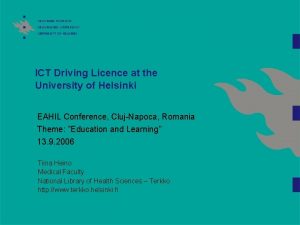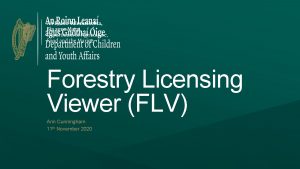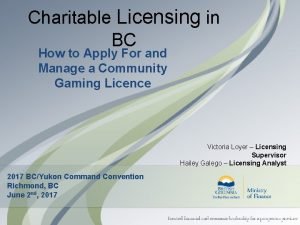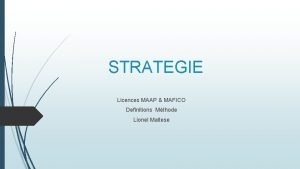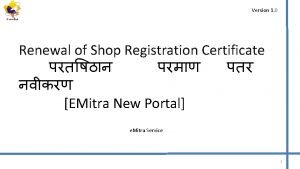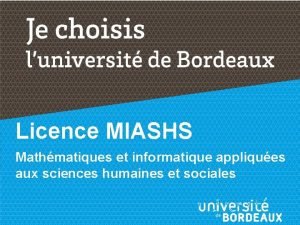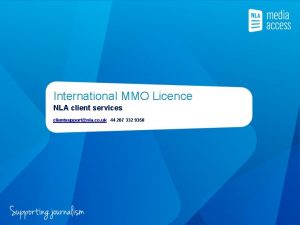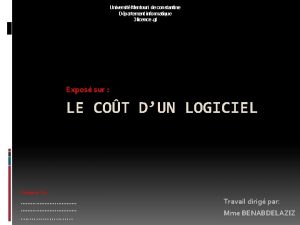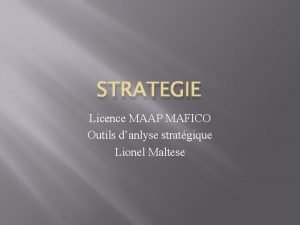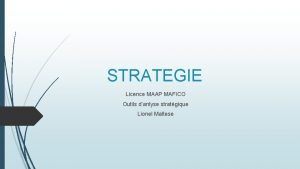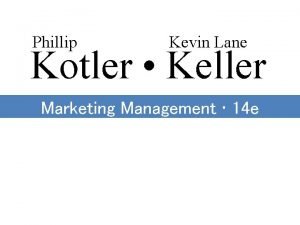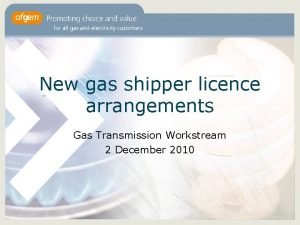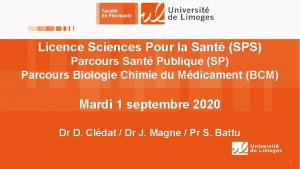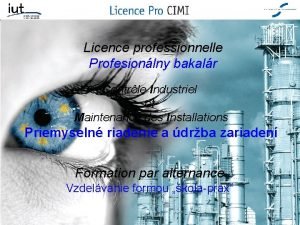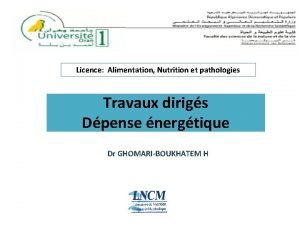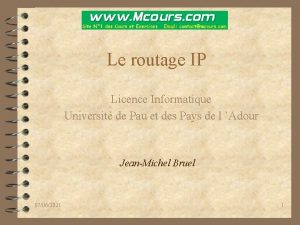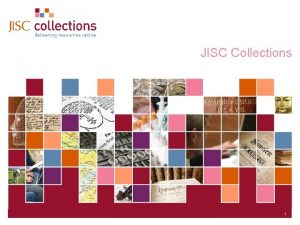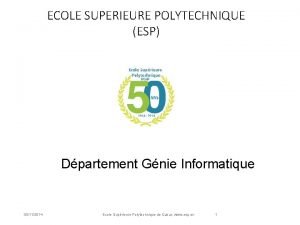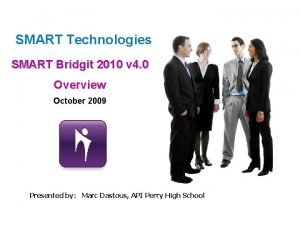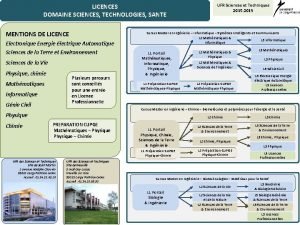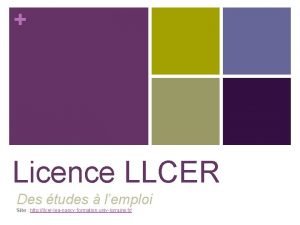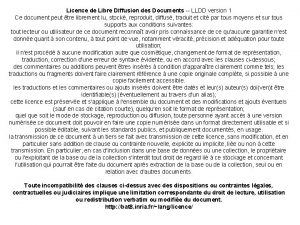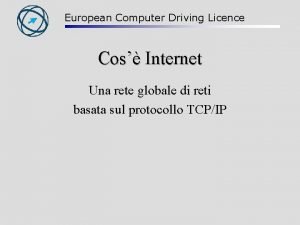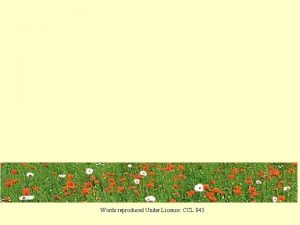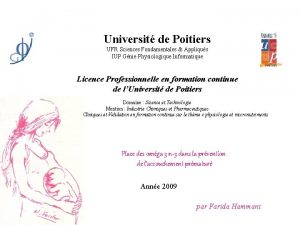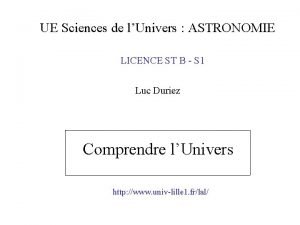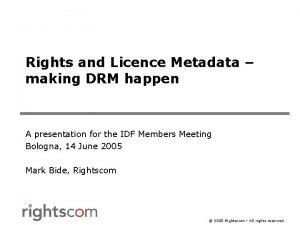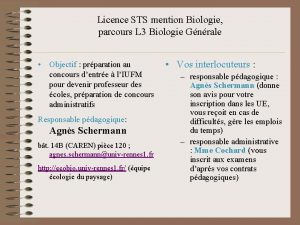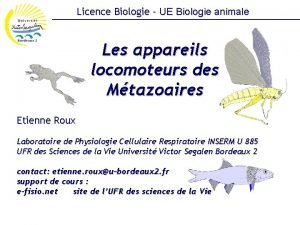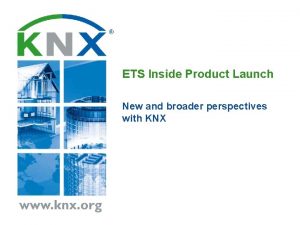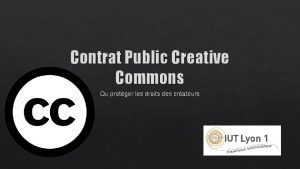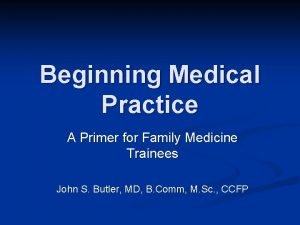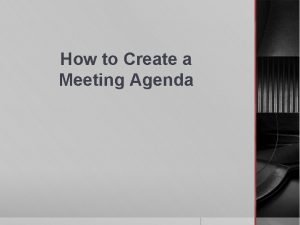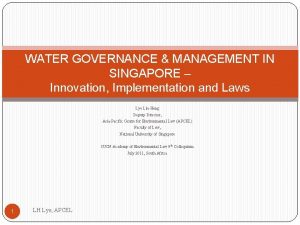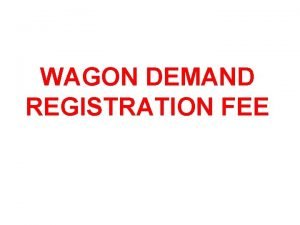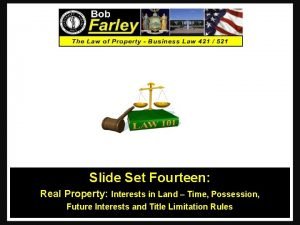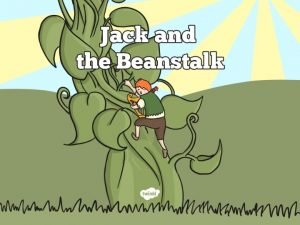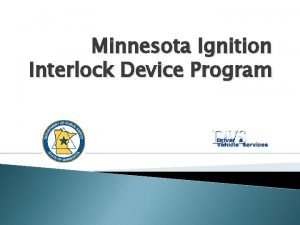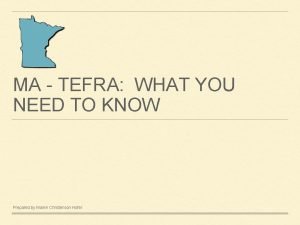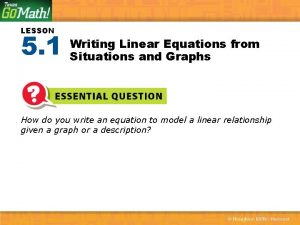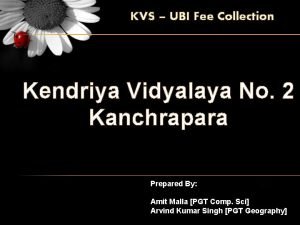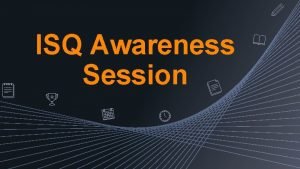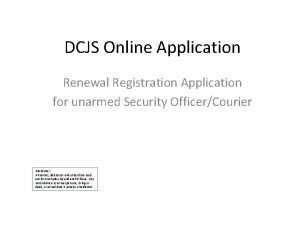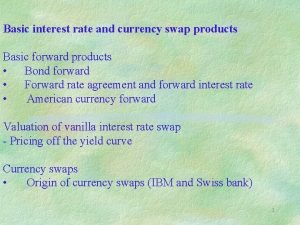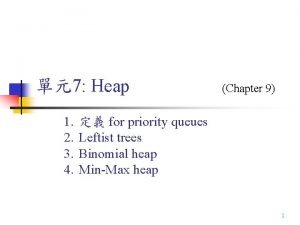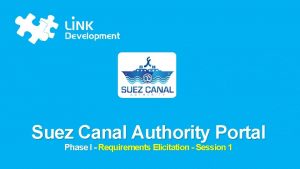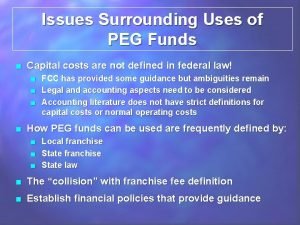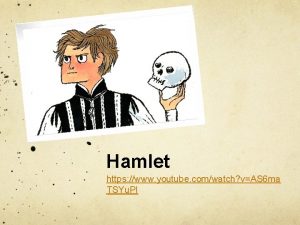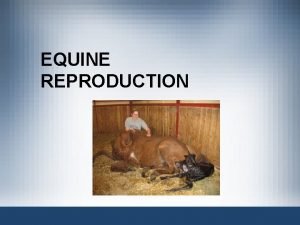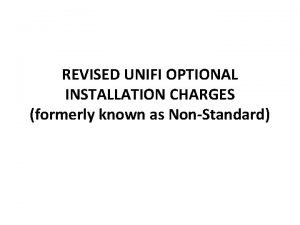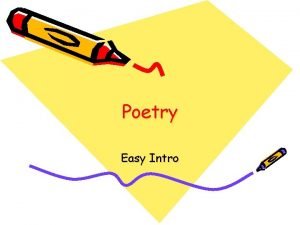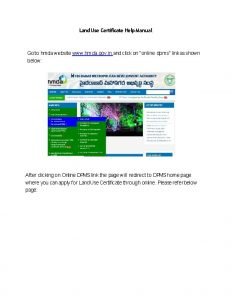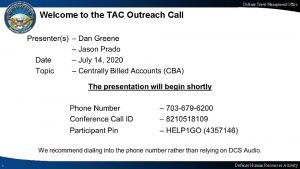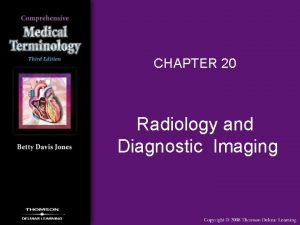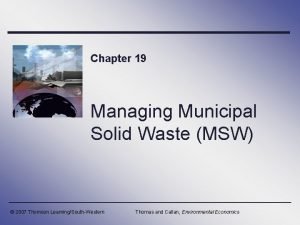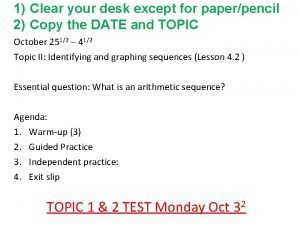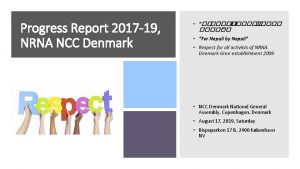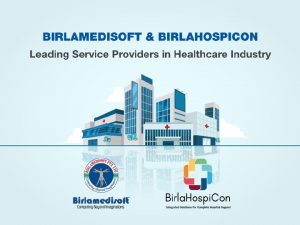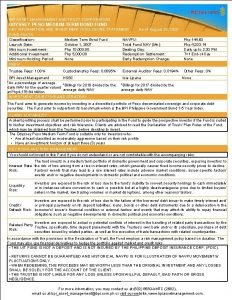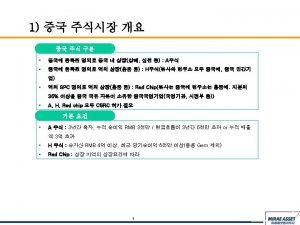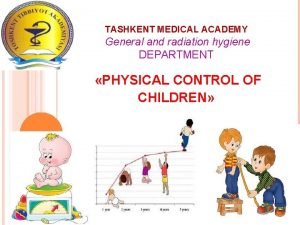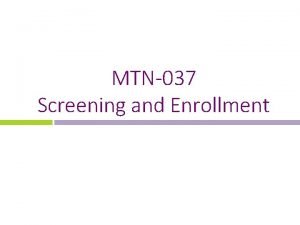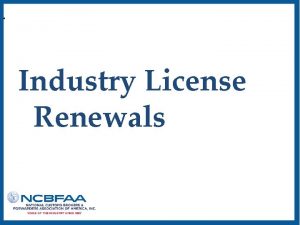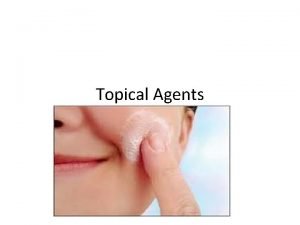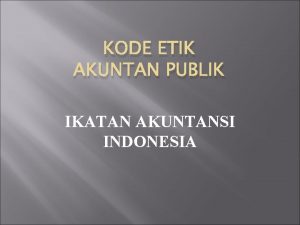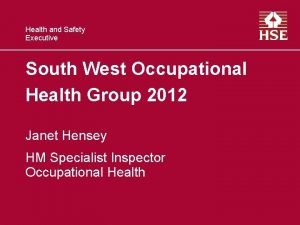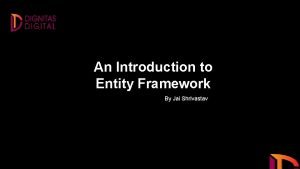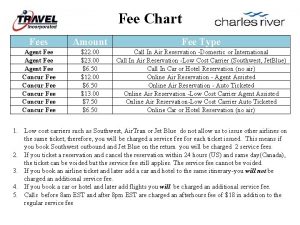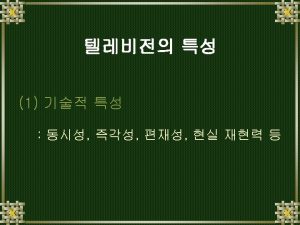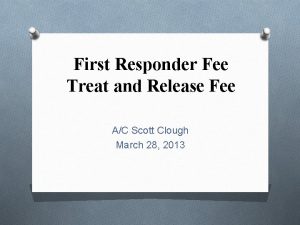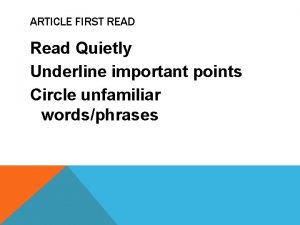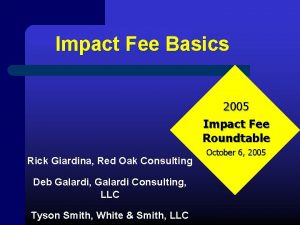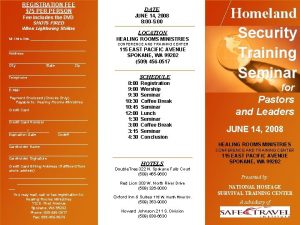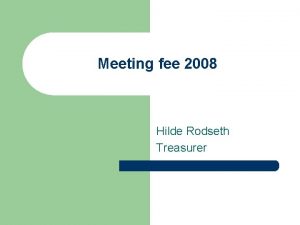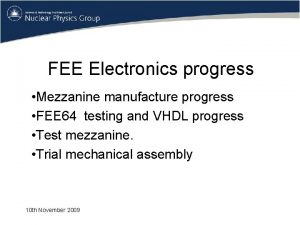Important Licence Fee and Copyright Information Read First
































































































































- Slides: 128

Important Licence Fee and Copyright Information – Read First: © 2001 to 2016, Qualsafe Limited. All Rights reserved. No part of this document may be reproduced, stored in a retrieval system, or transmitted in any form or by any means, electronic, mechanical, photocopying, recording or otherwise, without the prior written permission of the copyright owner. Tel. 0845 644 3305 www. qualsafe. com The text and images in this document may be used, free of charge, as part of an overhead presentation when a copy of First Aid Made Easy, Concise First Aid Made Easy, Emergency First Aid Made Easy, Paediatric First Aid Made Easy or CPR and AED First Aid Made Easy by Nigel Barraclough, published by Qualsafe Ltd, has been purchased for and given to every person viewing the presentation. Please ask permission before any other use or if you are in any doubt about copyright permission, otherwise licence fees are chargeable. IMPORTANT – Licence fees are applicable for any other use: The following licence fees are applicable for the use of any Qualsafe Ltd copyright text or image, either on a website, on paper, or in any other format: £ 1, 000 plus VAT per image/slide per year. If multiple copies are made, £ 1 plus VAT per image/slide copy. The fee payable is whichever is the greater amount and is payable in advance. By using an image without advance written agreement you agree to enter into a binding unwritten contract to pay Qualsafe Limited the above licence fees. It is the responsibility of the recipient of this Power. Point presentation to ensure that all future recipients are aware of these licence fees, so we recommend that this slide is not deleted. Qualsafe Ltd, Registered in England Wales No. 4001868. City View, Wapping Road, Bradford, BD 3 0 ED. EFAME Version 6

Thanks for using Qualsafe! Many thanks for using the Qualsafe range of first aid books. I hope you will find this Power. Point presentation useful. Most trainers have their own particular order of teaching, so rather than attempt to predict this, we have placed the slides more or less in the order of the topics as they flow in the book. The numbers at the top of the page correspond to the page number in the book. Please feel free move the slides into the order that you teach. If there is a slide that you don’t want to use, or want to change slightly, feel free! We don’t lock the slides down for this exact reason. All that we ask is that you take care that any information you add or change is in line with current accepted first aid practice. Feel free to add your organisation’s logo to the slides too – it’s your training course! If you have any comments or questions, please don’t hesitate to contact our dedicated clinical support team. Kind regards, Nigel Barraclough.

Power. Point Tips: • Press ‘B’ for a black screen at any point during your presentation. Press ‘B’ again to resume. • To adjust the order of slides, click ‘view’ on top menu, then ‘slide sorter’. Drag and drop the slides to the position you want them. • We have included more slides in than you need, so unwanted slides can be deleted by highlighting them and hitting ‘delete’ button. • If you want to include a slide from another presentation, use the ‘slide sorter’. Right click on the slide you want, select ‘copy’, then re-open this presentation, go to ‘slide sorter’, right click over the place you want to insert the slide and click ‘paste’. • To adjust the animation of a slide click ‘animations’ on top menu.

Emergency First Training Aid Welcome

2 The role of the first aider Assessing the situation Minimising infection risks What happened Number of casualties History, signs, symptoms Wash hands before and after giving help Wear disposable gloves Wear protective clothing if needed Cover your own cuts with a plaster Dispose of contaminated waste carefully Use sterile, undamaged, in-date dressings Protecting from dangers Assess for further danger Protect yourself first Getting help Ask bystanders Which emergency services? Recognise your limitations Prioritising treatment Most urgent thing first Most urgent person first Offer support and comfort

2 The aims of first aid P Preserve Life P Prevent Worsening P Promote Recovery

4 First aid kits

4 First aid kits Gloves Eye wash Finger dressing Face shield Scissors Burns dressing Safety pins Plasters Triangular bandage Adhesive tape Wound dressings Wipes Foil blanket Eye pad Conforming bandage

4 First aid kits

4 First aid kits

5 Scene survey What things should you consider before treating anyone? • What happened? • Further danger? • Can you cope? • Number of casualties? • Emergency services? • Who needs help first?

6 -7 The primary survey 1. Treat life-threatening conditions as soon as you find them, before moving on 2. You might not get as far as C 3. “Catastrophic Bleeding” can be prioritised before “Airway”

Life-threatening conditions 7 • • The tongue Vomit Choking Burns Strangulation Hanging Anaphylaxis • • Asthma Crushing of chest Chest injury Collapsed lung Poisoning Anaphylaxis Cardiac arrest • • • Heart attack Heart failure Severe bleeding Poisoning Anaphylaxis Cardiac arrest

Recognising life-threatening conditions • Pale clammy skin (for dark skin look at the colour of the skin inside the lips) • Blue tinges to the skin and lips (cyanosis) • Increase in pulse rate • Nausea or vomiting • Increased breathing rate (if the brain detects low oxygen) • Lowered breathing rate (indicates a brain problem) • Distressed breathing or gasping • Confusion or dizziness

8 Chain of survival

8 Resuscitation (CPR)

8 Resuscitation (CPR) D Danger R Response A Airway B Breathing Normally? C Circulation

8 Resuscitation (CPR) WARNING: In the first few minutes after cardiac arrest, a casualty may be barely breathing, or taking infrequent, noisy gasps. These are known as agonal gasps and should not be confused with normal breathing. If you are in doubt, start CPR.

8 Resuscitation (CPR) BONDI BEACH YOUTUBE LINK: https: //youtu. be/z. KEHQ-FYxa. Q Old guidelines, slow CPR, but there isn’t a better video to show agonal gasps!

8 Resuscitation (CPR) Sometimes a casualty can have a seizure-like episode when the heart stops. Carefully consider if the casualty is breathing normally.

8 Resuscitation (CPR) CHRIS SOLOMENS YOUTUBE LINK: https: //youtu. be/w 32 PUDL 2 lb 8 ‘Seizure like episode’ at 2: 37. Please ignore the speed and depth of the chest compressions!

10 Automated External Defibrillation (AED)

11 Child and baby CPR First aiders can use the adult sequence of resuscitation on a child or baby who is unresponsive and not breathing normally.

11 Child and baby CPR The following minor modifications to the adult sequence will, however, make it even more suitable for use in children: Give five initial rescue breaths before starting chest compressions Compress the chest by at least one-third of its depth: For a baby under 1 year, use two fingers (4 cm) For a child over 1 year, use one or two hands to achieve an adequate depth (5 cm) If you are on your own, perform resuscitation for about 1 minute before going for help

11 CPR with child modifications 1/3 depth of chest

8 Vomit during resuscitation Gurgling noises when giving rescue breaths? (minimise the interruption to CPR)

14 Unconscious casualty Airway blocked by the tongue. Airway blocked by vomit.

9 Causes of unconsciousness F I S H Fainting Imbalance of heat Shock Head injury S H A P E D Stroke Heart attack Asphyxia Poisoning Epilepsy Diabetes

9 Levels of response – AVPU A Alert V Voice P Pain U Unresponsive

Recovery position 15 1 2 3 4

15 Recovery position - baby

15 Unconscious casualty DO: DO NOT: • Turn the casualty on to the opposite side every 30 minutes if they are in the recovery position for a prolonged period. • Place a pillow under the head whilst the casualty is on their back. • Place a heavily pregnant casualty on her left side to help circulation. • Place anything in an unconscious casualty’s mouth.

16 Focal seizure

16 Focal leading to generalised seizure

16 Seizures

The respiratory system

The respiratory system

17 Choking recognition • Often happens whilst eating / drinking • Ask “are you choking? ” Mild choking: Severe choking: • Can cough and answer your question • Weakening cough • Unable to speak – may ‘nod’ in response to your question. • Struggling or unable to breathe. • Distressed look on the face. • Will become unconscious if untreated.

18 Choking adult or child Cough! 5 Back Blows 5 Abdominal Thrusts

19 Choking baby 5 Back Blows 5 Chest Thrusts

18 -19 Choking – unconscious casualty Unconscious = Start CPR!

17 Choking – seeking medical advice After successful choking treatment, seek immediate medical attention if the casualty: • Has received abdominal thrusts; • Has difficulty swallowing; • Has a persistent cough; OR • Feels like ‘an object is still stuck in the throat’.

20 Blood loss About one third

20 Blood loss

20 Types of wound spurts oozes trickles

21 Shock – normal circulation The heart is pumping fine, there is enough blood and the blood vessels have good tone.

21 Hypovolaemic shock Blood or fluids are lost

22 Treatment of bleeding Sit or Lay Rapidly assess: Examine • Type of bleed • Exact point of bleeding Pressure 10 minutes Dress • Foreign objects

Catastrophic bleeding – prioritising treatment

23 Haemostatic dressings For life-threatening bleeding that cannot be controlled by direct pressure Useful for: Neck – abdomen – groin – armpit • If possible – apply pressure to exact point of pulsating bleeding and mop out pooled blood • TIGHTLY pack the whole wound • Compress for 5 minutes (repeat if needed) • Send packaging to hospital with casualty Do not block the air flow in a sucking chest wound

23 Haemostatic dressings For life-threatening bleeding that cannot be controlled by direct pressure Useful for: Neck – abdomen – groin – armpit Celox gauze training video: https: //youtu. be/0 i. Nh. Ca. NKQk. E

23 Tourniquets For life-threatening bleeding that cannot be controlled by direct pressure Useful for: Arms or legs – multiple trauma – multiple casualties

23 Tourniquets For life-threatening bleeding that cannot be controlled by direct pressure Useful for: Arms or legs – multiple trauma – multiple casualties

23 Tourniquets Improvised tourniquet in your first aid kit: Scissors Triangular bandage

23 Tourniquets For life-threatening bleeding that cannot be controlled by direct pressure Useful for: Arms or legs – multiple trauma – multiple casualties CAT Tourniquet training videos: https: //youtu. be/tz. XNsfes. Ub 0 https: //youtu. be/LDN 03 Fg. Uhx. U

Types of wound Contusion

24 Minor injuries – contusion (bruise) Contusion Bruise

Types of wound Contusion Abrasion

24 Minor injuries – abrasion (graze) Contusion Abrasion Graze

Types of wound Contusion Abrasion Laceration

Types of wound – laceration Contusion Abrasion Laceration

Types of wound Contusion Abrasion Laceration Incision

Types of wound – incision Contusion Abrasion Laceration Incision

Types of wound Contusion Abrasion Laceration Incision Penetrating

27 Types of wound – penetrating Contusion Abrasion Laceration Incision Penetrating

27 Types of wound – penetrating Contusion Abrasion Laceration Incision Penetrating

27 Types of wound – penetrating / laceration Contusion Abrasion Laceration Incision Penetrating

Types of wound Contusion Abrasion Laceration Incision Penetrating Amputation

26 Types of wound – amputation Contusion Abrasion Laceration Incision Penetrating Amputation

26 Amputation Contusion Abrasion Laceration Incision Penetrating Amputation

24 Minor injuries – embedded object Embedded glass

25 Minor injuries – splinter 4 Tetanus?

25 Minor injuries – insect sting

25 Animal (or human) bite

26 Minor injuries – nosebleed Nosebleed

27 Eye injury - chemicals Eye irrigation

28 Severity of burns S Size C Cause A Age L Location D Depth

28 Burns – size 1%

28 Burns – depth Superficial Partial Thickness Full Thickness

28 Burns that need hospital treatment >1% Full Thickness

28 Burns

28 Burns treatment 1 Cool 2 Remove 3 Dress

The skeleton

Types of fracture Closed Complicated Open Green Stick

Types of fracture – closed

Types of fracture – open

Types of fracture – open fracture Note the poor aseptic technique!

Types of fracture – open fracture

Dislocation dislocated kneecap Dislocated Normal

29 Fractures – signs and symptoms Pain Loss of power Unnatural movement Swelling or bruising Deformity Irregularity Crepitus Tenderness

Slings Elevated Sling

Slings Support Sling

30 The spine 7 Cervical 12 Thoracic 5 Lumbar 5 Fused Sacral

30 Spinal injury – recognition • Blow to head, neck or back (especially resulting in unconsciousness) • Fall from height (e. g. horse) • Dive into shallow water • Accident involving speed (e. g. knocked down or a car accident) • Cave in accident (e. g. crushing, or collapsed rugby scrum). • Multiple injuries • Pain or tenderness in neck or back after accident (pain killers or other injuries can mask pain – beware). • If you are in any doubt

30 Spinal injury

31 Diabetes insulin sugar Fixed amount injected: Burns up sugar! Eaten: To balance the insulin taken.

31 Diabetes – untreated insulin sugar

31 Diabetes – low blood sugar insulin Overdosed on insulin Or not eaten enough food; Or over exercised.

31 Diabetes – low blood sugar Why is low blood sugar so dangerous? Brain cells can only use glucose (sugar) for energy Oxygen + Food = Energy = LIFE

31 Diabetes – low blood sugar treatment 20 g of Glucose: • 150 ml Lucozade Original • 200 ml lemonade • 200 ml orange juice • 4 jelly babies • 4 teaspoons of sugar • 20 skittles • Glucose tablets vary x 4

32 The heart To the body From the body To the lungs From the body

32 The heart Left Atrium Right Atrium Left Ventricle Right Ventricle

32 The heart Aorta Coronary Artery

32 Angina Cholesterol Plaque Coronary Artery Wall Reduced blood flow Angina

32 Heart attack Blood Clot Heart Attack

32 Heart attack Blood clot

32 Heart attack Blood clot Area of dying heart muscle

32 Angina and heart attack Angina Heart Attack Onset Sudden, usually during exertion, stress or extreme weather. Sudden, can occur at rest. Pain Vice-like squashing pain. ‘Dull’, ‘tightness’ or ‘pressure’. Can be mistaken for indigestion. Location of Pain Central chest. Can radiate into arms, neck, jaw, back, shoulders. Duration 3 – 8 Minutes, rarely longer. Usually longer than 30 minutes. Skin Pale, may be sweaty. Pale, grey colour. May sweat profusely. Pulse Variable. Often becomes irregular, missing beats. Other signs and symptoms Shortness of breath, weakness, anxiety. Shortness of breath, dizziness, nausea, vomiting, sense of ‘impending doom’. Factors giving relief Resting, reducing stress, taking ‘GTN’ medication. GTN medication may give partial or no relief.

33 Stroke: “Brain Attack”

33 Stroke F A Facial weakness Arm weakness S Speech problems T Time to call 999!

34 Asthma

34 Asthma - recognition • Difficulty breathing • Wheezy breath sounds originating from the lungs. • Difficulty speaking (will need to take a breath in the middle of a sentence). • Pale, clammy skin • Grey or blue lips and skin • Use of muscles in the neck and upper chest • Exhaustion in a severe attack • May become unconscious and stop breathing in a prolonged attack

34 Asthma - recognition Silence in asthma is not good. It is deadly.

34 Asthma DO: DO NOT: • Keep the casualty upright • Lay the casualty down • Use a spacer device if possible • Take them outside in cold air

35 Anaphylaxis

35 Anaphylaxis Picture: Many Thanks to the Anaphylaxis Campaign.

35 Anaphylaxis – recognition Anaphylaxis has three main characteristics: 1. A rapid onset – the casualty usually becomes very ill, very quickly. 2. A life-threatening Airway, Breathing or Circulation problem (or a combination of them). 3. A skin rash, flushing and/or swelling (but not all casualties have this).

Anaphylaxis – recognition 35 Airway recognition: • Swelling of the tongue, lips or throat. A feeling of the throat ‘closing up’. • A hoarse voice or loud pitched, noisy breathing. Breathing recognition: • Difficult, wheezy breathing or a ‘tight chest’. Circulation recognition: • Dizziness, feeling faint or passing out, particularly if sat upright. • Pale, cold, clammy skin and fast pulse. • The rash may disappear. • Nausea, vomiting, stomach cramps, diarrhoea.

35 Anaphylaxis

36 HSE first aid courses

HSE first aid courses – sequence of training

and finally… Successful Resuscitation?

37 Accident book Name Address Occupation lty a u s a The C Name Address You Occupation Where How / Cause Injuries www. RIDDOR. gov. uk nt e d i c c The A

How to complete your answer paper f i n e p k c a Bl

Emergency First Training Aid Thank you!

8 The airway

X Make your own slides / mnemonics A B C D E Alpha Bravo Charlie Delta Echo

X Make your own slides / mnemonics 1 2 3 4 Alpha E F G H Echo I J K L Bravo Charlie Delta Foxtrot Golf Hotel Indigo Juliette Kilo Lima M N O P Mike Q R S T Quebec U V W X November Oscar Papa Romeo Sierra Tango Uniform Victor Whiskey X-ray Y Z Yankee Zulu
 Pemra cable tv licence fee
Pemra cable tv licence fee Why is it important to think and read like a historian?
Why is it important to think and read like a historian? From most important to least important in writing
From most important to least important in writing From most important to least important in writing
From most important to least important in writing Least important to most important
Least important to most important First sale doctrine copyright
First sale doctrine copyright Licence génie civil la rochelle
Licence génie civil la rochelle Nnhpd monographs
Nnhpd monographs Ict driving licence
Ict driving licence Spla licence
Spla licence Forestry license viewer
Forestry license viewer Dmc online registration
Dmc online registration Gpeb license
Gpeb license Licence mafico
Licence mafico Ebcl certificate
Ebcl certificate Freesound content licence
Freesound content licence Voyant tools licence
Voyant tools licence Shop licence rajasthan
Shop licence rajasthan Miashs bordeaux
Miashs bordeaux Nla client support
Nla client support Mvls microsoft licensing
Mvls microsoft licensing Licence informatique constantine
Licence informatique constantine Licence maap
Licence maap Licence maap
Licence maap Multichannel conflict
Multichannel conflict Gas transporter licence
Gas transporter licence Licence sps
Licence sps Licence pro cimi
Licence pro cimi Licence alimentation, nutrition et pathologie
Licence alimentation, nutrition et pathologie Licence informatique pau
Licence informatique pau Jisc collections manager
Jisc collections manager Parallel sysplex licence charge
Parallel sysplex licence charge économie internationale licence 3
économie internationale licence 3 Esp dakar formation payante master
Esp dakar formation payante master Sfa univ poitiers
Sfa univ poitiers Smart bridgit
Smart bridgit Licence sciences technologies santé mention informatique
Licence sciences technologies santé mention informatique Licence llcer
Licence llcer Connexion
Connexion Internet licence
Internet licence Anyone working within the private security industry should
Anyone working within the private security industry should Ccl licence
Ccl licence Licence spi poitiers
Licence spi poitiers Licence astronomie
Licence astronomie Licence drm
Licence drm Licence sts
Licence sts Licence biologie animale
Licence biologie animale Ets licence
Ets licence Licence creative commons définition
Licence creative commons définition Light aircraft maintenance
Light aircraft maintenance Syndicated panel surveys measure the
Syndicated panel surveys measure the University of chemistry and technology in prague
University of chemistry and technology in prague Fee for service vs capitation pros and cons
Fee for service vs capitation pros and cons The agenda communicates important information such as
The agenda communicates important information such as You give personal information when you tell
You give personal information when you tell The newspaper report contained important information
The newspaper report contained important information Why doesn't caesar read artemidorus letter first
Why doesn't caesar read artemidorus letter first The tell tale heart title meaning
The tell tale heart title meaning St thomas school ranchi fee structure
St thomas school ranchi fee structure Waterborne fee
Waterborne fee Wagon registration fee
Wagon registration fee Hague system fee calculator
Hague system fee calculator Rule of perpetuities
Rule of perpetuities Once upon a time there was a kind boy who saw a
Once upon a time there was a kind boy who saw a Minnesota ignition interlock vendors
Minnesota ignition interlock vendors Tefra tax
Tefra tax Graph sheet
Graph sheet Ubi kv fees
Ubi kv fees Ibp exemption policy
Ibp exemption policy Surat bakra ki aayat ka mausam kya hai
Surat bakra ki aayat ka mausam kya hai Fire permit fee
Fire permit fee Trust reporting services
Trust reporting services Dcjs renewal application
Dcjs renewal application Fee simple estate
Fee simple estate Swapd fee calculator
Swapd fee calculator Agdao coop branches
Agdao coop branches Min max heap data structure
Min max heap data structure Ung dual enrollment deadline
Ung dual enrollment deadline Keimyung university dormitory
Keimyung university dormitory Ulsan national institute of science and technology
Ulsan national institute of science and technology Suez canal toll fee calculator
Suez canal toll fee calculator What is a 404a5
What is a 404a5 Financial management
Financial management Fee amanillah meaning bangla
Fee amanillah meaning bangla Railway board's letter no.2005/lml/18/8
Railway board's letter no.2005/lml/18/8 Peg capital fee
Peg capital fee Youtube
Youtube Renumeration fee
Renumeration fee Ssbooking
Ssbooking Fee note
Fee note Kaplan acca course fee
Kaplan acca course fee Ocsd sewer user fee
Ocsd sewer user fee Bts fee option a
Bts fee option a Unifi standard installation
Unifi standard installation Fee fi fo fum is an example of what figurative language
Fee fi fo fum is an example of what figurative language Land use certificate apply online
Land use certificate apply online Iba vs cba in dts
Iba vs cba in dts Brong-kog-rah-fee
Brong-kog-rah-fee A flat fee pricing system for msw services
A flat fee pricing system for msw services Farah pays a $25 signup fee
Farah pays a $25 signup fee Marina del rey slip vacancies
Marina del rey slip vacancies Real estate risk management fee
Real estate risk management fee Nrna membership fee
Nrna membership fee Remarking dse
Remarking dse Shcil court fee
Shcil court fee Fee management system modules
Fee management system modules Odyssey peso medium term bond fund
Odyssey peso medium term bond fund Initial listing fee
Initial listing fee Avinash college of commerce intermediate fee structure
Avinash college of commerce intermediate fee structure Fees application in english
Fees application in english Tashkent medical academy fee structure
Tashkent medical academy fee structure Proposed fee structure
Proposed fee structure Peppol membership fee
Peppol membership fee Ssp naat
Ssp naat Fee fie foe firm
Fee fie foe firm Customs broker triennial status report 2021 form
Customs broker triennial status report 2021 form Graduation fee breakdown
Graduation fee breakdown Amnuay silpa tuition fee
Amnuay silpa tuition fee Ray-dee-og-rah-fee
Ray-dee-og-rah-fee Cirbi irb
Cirbi irb Kode
Kode Fee for intervention
Fee for intervention Bcie canada
Bcie canada Www.ashrae.org membership
Www.ashrae.org membership A daycare center charges a $75 enrollment fee
A daycare center charges a $75 enrollment fee Difference between code first and database first approach
Difference between code first and database first approach State space search
State space search According to gary goshgarian, critical reading is
According to gary goshgarian, critical reading is How to write centavos
How to write centavos

